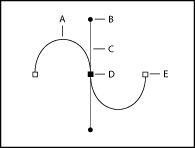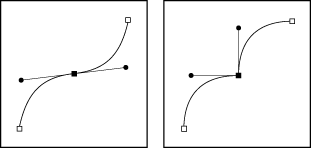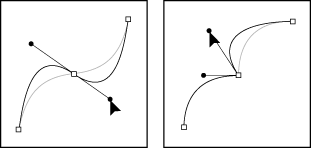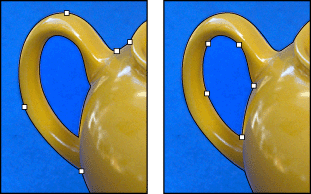About anchor points, direction lines, direction points, and components
A path consists of one or more straight or curved segments. Anchor points mark the endpoints of the path segments. On curved segments, each selected anchor point displays one or two direction lines, ending in direction points. The positions of direction lines and points determine the size and shape of a curved segment. Moving these elements reshapes the curves in a path.

A path can be closed, with no beginning or end (for example, a circle), or open, with distinct endpoints (for example, a wavy line).
Smooth curves are connected by anchor points called smooth points. Sharply curved paths are connected by corner points.

When you move a direction line on a smooth point, the curved segments on both sides of the point adjust simultaneously. By comparison, when you move a direction line on a corner point, only the curve on the same side of the point as the direction line is adjusted.

A path does not have to be all one connected series of segments. It can contain more than one distinct and separate path component. Each shape in a shape layer is a path component, as described by the layer's clipping path.
